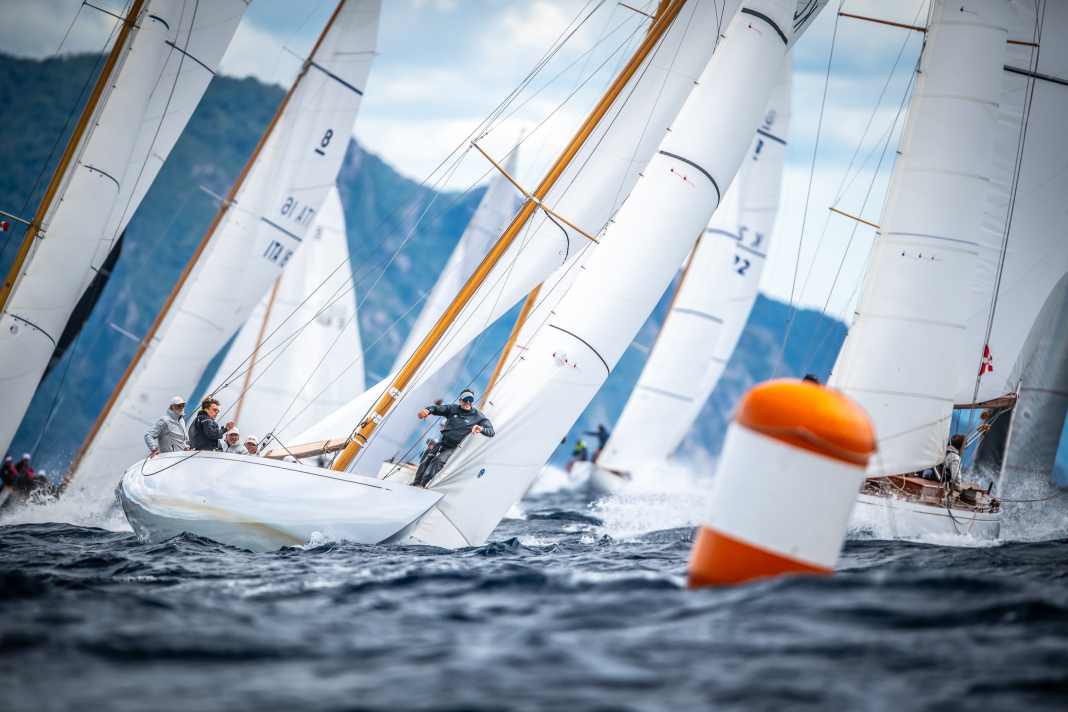8 metre racing yachts: Great pictures from the Eight World Championship in Italy






The event was organised by the Yacht Club Italiano in cooperation with the International Eight Metre Association (IEMA). The crews battled for silver at the highest level. YACHT photographer Tobias Stoerkle has captured the best impressions.
About the eight-metre racing yachts
The metre formula goes back to an international conference in 1906. As a result, 11 classes were created. They are called 5-, 6-, 7-, 8-, 9-, 10-, 12-, 15-, 19-, 23-metre classes and one for yachts of any higher racing value.
Due to their dimensions, aft boats combine the best of both worlds. They are large enough and have the necessary fittings to be ferried by the racing crew on their own keel. On the other hand, they make it possible to take part in regattas with a relatively small amateur crew.
The eights built in the early years were equipped with a gaff rig that was far too large by today's standards. The designers of the early days took advantage of the weakness of the International Rule to experiment ever more wildly with dimensions in favour of a long waterline. The yachts became narrower and narrower. They became slender and their seaworthiness suffered as a result.
When the second edition of the International Rule was introduced in 1920, the hulls became more balanced, but above all the rigs were changed. Johan Anker invented the marconi rig, which quickly became established in the stern as well. Initially, it was still a problem to proportion the now much longer spars appropriately and to absorb their forces correctly. In the first years of the second rule, mast and boom breakages were therefore the order of the day.
The eights were Olympic from 1908 to 1936
The joy of experimentation had a simple reason. The eights became an Olympic class as early as 1908. They remained so up to and including the 1936 Summer Olympics in Kiel. What's more, the class developed into the most prestigious of the Olympic classes. The boats were expensive to buy and, from 1920 onwards, were also the largest Olympic boats.
On the other hand, they were not nearly as expensive as the big twelve and so it was quite common among the more solvent "gentlemen sailors" to commission a new boat from year to year, always in the hope that the designer, shipyard and crew would constantly learn from the experience gained and improve the results accordingly.
And so the names of the great designers of their time can also be found in the classic aft boats. Johan Anker, Max Oertz, William Fife, Charles Nicholson, Alfred Mylne, Olin Stephens, Starling Burgess, Henry Rasmussen and many more.
After the war, it took many years before boats were commissioned again. The drawback of such a design class is that each boat is built individually and is therefore comparatively expensive. However, many eights survived the war so that the class was able to survive. At the end of the 1960s, a few new boats were commissioned and in 1970 the World Cup was sailed for the first time. As a result, the class experienced an enormous upswing in the following years. On the other hand, this was also the time when many of the old, no longer competitive boats were "converted" into cruising boats. A circumstance that many a classic boat enthusiast regrets, but which on the other hand can also be held responsible for the fact that many of the boats survived until the renaissance of the classics.
Eights are widespread internationally today
Finally, since 1983, the class has even enjoyed royal splendour. In that year, Olav V of Norway donated the Sira Cup, named after his classic eight, which has been sailed as part of the World Cup regattas ever since. The sailing-enthusiastic monarch's aim was to boost morale among the owners of classic eights. At the time, they were not yet perceived as the cultural assets they are today. Instead, the early eighties were characterised by sophisticated new builds. However, the Sira Cup marked the beginning of a new appreciation of racing yachts built before 1960.
Today, the class is widespread internationally, with strongholds in northern Europe and Canada. They often have to be transported overland to regattas, which are sometimes held in Scandinavia, sometimes in the Mediterranean and sometimes on the great European lakes. This means a great deal of effort, as aft boats are typically around 14 metres long, 2.5 metres wide and 2 metres deep. They weigh just under ten tonnes.
There are four different age groups. They are called First-Rule, Sira, Neptune and Modern. The World Cup regattas, which are held at irregular intervals, often attract fields of twenty to thirty yachts. In the meantime, restored eights from the early years are also competing for the First Rule Cup.

